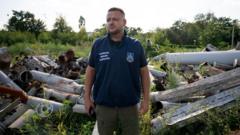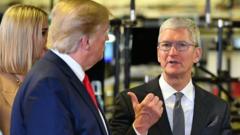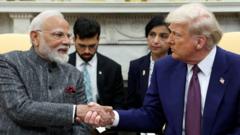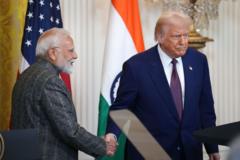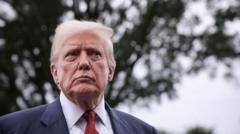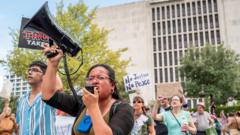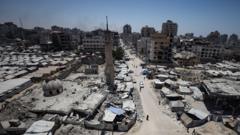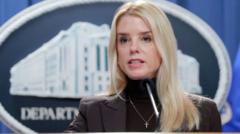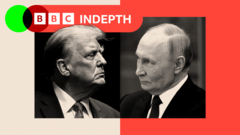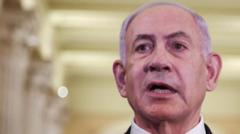An analysis by BBC Verify reveals that Russian attacks on Ukraine have more than doubled since Donald Trump’s inauguration in January, contrary to his calls for a ceasefire. The escalation follows a pattern of rising aggression under previous U.S. administrations, with critics noting Trump's administration's pauses in military aid could have emboldened Russia. The continuing Soviet-like escalation of military capabilities poses serious implications for Ukraine and U.S.-Russia diplomatic relations.
Rising Russian Aggression: Attacks on Ukraine Surge Since Trump's Return
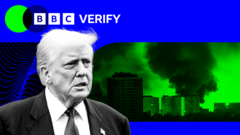
Rising Russian Aggression: Attacks on Ukraine Surge Since Trump's Return
The increase in Russian drone and missile attacks on Ukraine has surged significantly since President Donald Trump resumed office, raising concerns regarding U.S. foreign policy and military support.
Despite his calls for peace, recent findings indicate that Russia has intensified its military assault on Ukraine since Donald Trump’s return to the presidency earlier this year. A detailed analysis by BBC Verify reports a dramatic rise in the number of drones and missiles fired from Russia, surpassing levels recorded under former President Joe Biden.
Initial increases in attacks were observed during Biden’s final months in office; however, they soared after Trump’s election victory. Since his inauguration, the tally of aerial strikes has reached an unprecedented high for the ongoing conflict, raising alarms over the potential ramifications for Ukraine's security.
During his campaign, Trump claimed he could halt the violence in Ukraine within a day, attributing the conflict partially to a lack of respect for the U.S. presidency from the Kremlin. Critics have suggested that, in his approach to negotiating a ceasefire, Trump may inadvertently be favoring Russia. His administration faced backlash for twice suspending military aid to Ukraine, while Moscow has dramatically increased its drone and missile production—a fact acknowledged by Ukrainian military intelligence.
Between January 20 and July 19, the Kremlin reportedly launched 27,158 munitions, reflecting a significant escalation compared to the 11,614 incidents documented in the last six months of Biden’s tenure. The Deputy Press Secretary for the White House, Anna Kelly, asserted that the ongoing war is a consequence of Biden’s policies, asserting that Trump's intention is to end hostilities by reinforcing aid to NATO allies and confronting Putin with potential sanctions.
In his early days in office, Trump appeared to soften U.S. rhetoric aimed at Russia; however, by mid-February, air strikes on Ukraine had resumed their upward trend, peaking on July 9, when a staggering 748 munitions struck Ukraine, leading to multiple casualties.
Despite Trump's verbal frustration over Russia's attacks, including a notable outburst after a record barrage on May 25, Russian military actions have continued unabated. Commanding voices from U.S. political circles, such as Senator Chris Coons, attribute the surge in attacks to perceptions of U.S. indecisiveness under Trump, cautioning that these perceptions may have emboldened the Kremlin.
In response to the growing hostilities, there are renewed demands for the U.S. to bolster its military support by providing Ukraine with advanced missile defense systems like the Patriot batteries. The contention persists that constraints on military resources supplied to Ukraine, coupled with Russia's ramped-up production capabilities of weaponry—including drones designed for aerial assaults—have left Ukraine increasingly vulnerable.
Statements from military analysts suggest that the persistent delays in U.S. support could foster a dangerous environment wherein Russian aggression continues to escalate. As the conflict evolves, the local populace bears the psychological toll of an ongoing aerial threat, fostering feelings of exhaustion and anxiety among citizens like Dasha Volk, a journalist in Kyiv, who expressed the intense mental strain of living under the daily threat of violence.
As the situation unfolds, there is growing recognition that the path to peace may necessitate a firmer and more sustained commitment from the U.S. administration to provide security assistance to Ukraine, countering the recent uptick in Russian aggression. The future direction of this conflict—and the impact of U.S. policy—remains a critical concern for policymakers and citizens alike.

